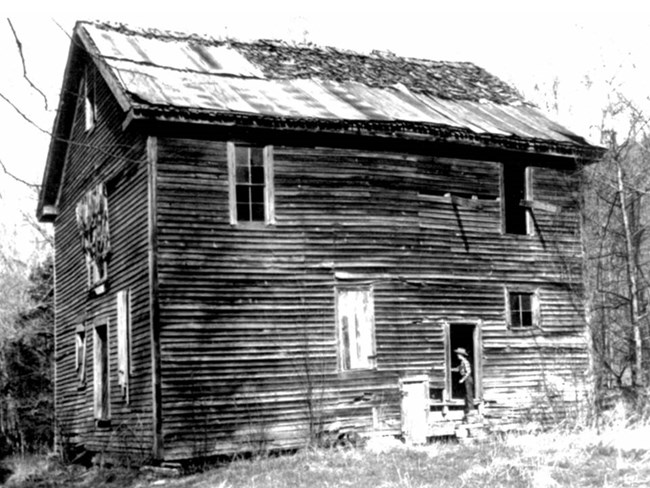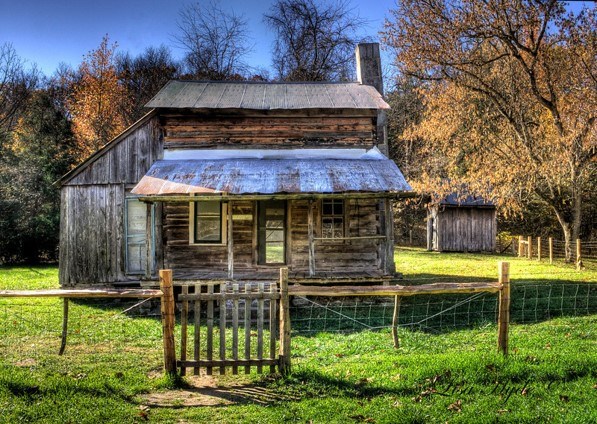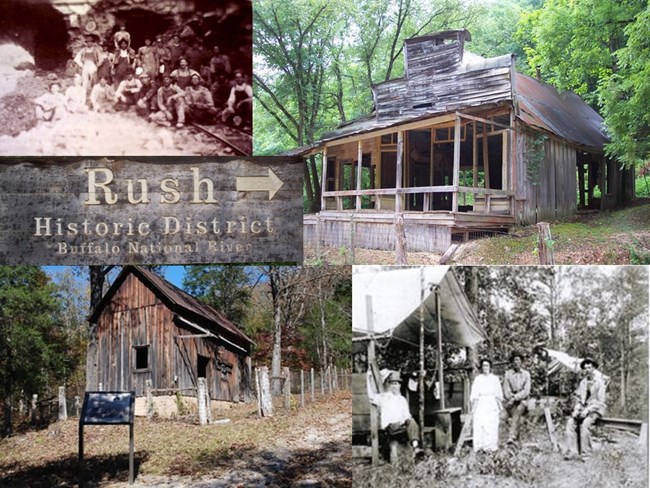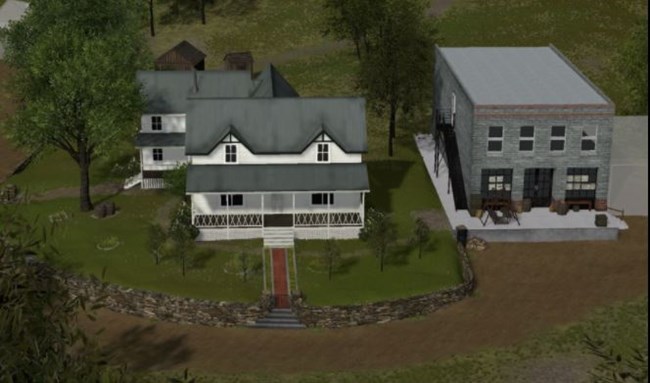
Villines family, Newton County Arkansas Boxley Valley Historic DistrictThroughout history, the waters of the Buffalo River Valley have supported agriculture, industry, and community. Boxley Grist Mill used the power of moving water to grind corn into meal and wheat into a flour, a service that was hard to come by in the rural Ozarks in the later 19th century. The Boxley Mill was owned by three generations of the Villines Family and in operation from the 1870s until the 1950’s when a major flood washed out a large portion of the millrace. 
(V. Jones) NPS In the Jasper area of the park, take time to visit The Parker-Hickman Farmstead. Take Hwy 7 north of Jasper and turn at the sign for Erbie. The farmstead is a self-guided tour of an Ozark farm occupied for more than 100 years by 9 different owners. This is possibly the oldest home here within Buffalo National River, built in the 1840s by Alvin and Elizabeth Park and Greenberry Parker who moved here from Tennessee. It is now known as the Parker-Hickman home, because the Parkers were the builders of the home and the Hickman’s were the final owners before the park. The house reflects the changes that took place in the Ozarks over the years. Electricity and telephone arrived to the area in the 1940’s. Walls and ceilings were paneled in the 1960’s.

NPS Rush Historic DistrictVisit the "Ghost Town" of Rush near the Yellville/Buffalo Point area of the park. 
University of Arkansas If Walls Could Talk: The Story of the Hicks Property
|
Last updated: September 12, 2024
